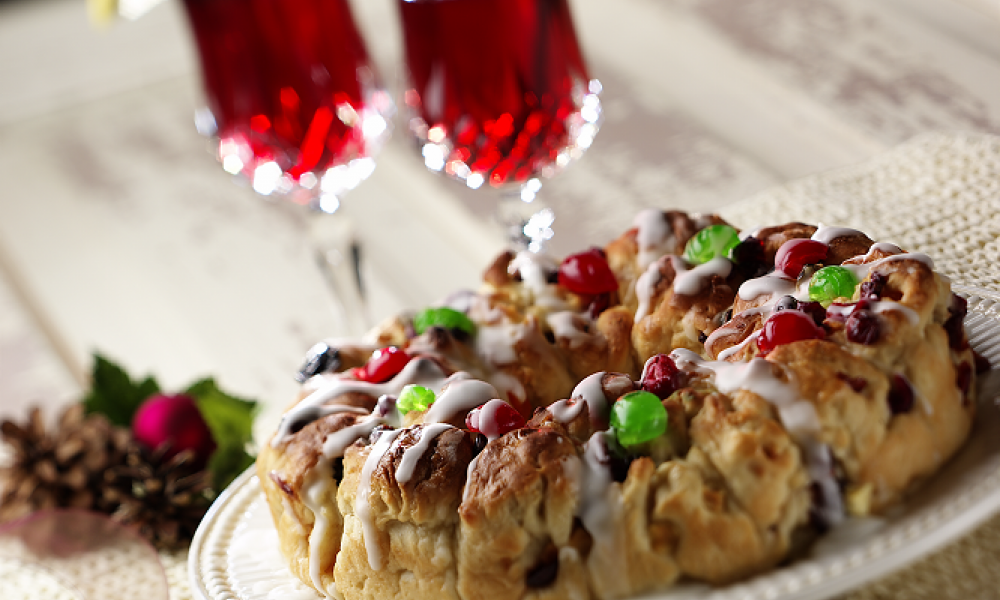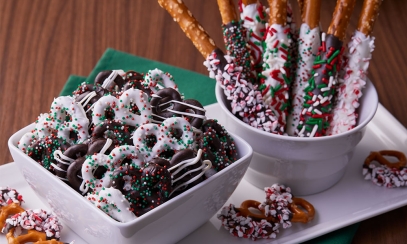
Christmas Isn’t Over: Celebrate Epiphany
How some European cultures celebrate:
How some European cultures celebrate:
Spain: Children in Spain celebrate the day the Three Wise Men visited the newborn Christ Child by filling their shoes with hay and other grasses and leaving them on windowsills to feed the Wise Men’s camels. In the morning, the grasses are gone and replaced by candy and nuts.
Italy: In Italy, the Epiphany tradition includes a witch named La Befana who visits each home to leave candy in the stockings of good girls and boys and charcoal for those who’ve misbehaved. Legend has it that the Three Wise Men stopped at Befana’s hut to ask for food and shelter on their way to Bethlehem. She refused them and sent them away. Later, she regretted her decision and atones for her actions by leaving little gifts for all God’s children. A woman named Babouschka serves the same purpose in Russia.
France: The people of France honor the Wise Men by crafting “santons” (little saints) in their memory. These terra-cotta figures represent all the characters of the nativity and their animals as well as prominent men and women of the village in which they are created.
Germany: Among European countries, Germany probably has the most elaborate Epiphany celebrations of all.
January 6 is the day that many families take down their Christmas trees and join in a huge, community bonfire. For the children, this is an especially joyous time because it means the “plündern” (raiding) of the tree’s ornaments begins. Hard candies, chocolates wrapped in foil, and cookies are their reward.
In the evening, prayers are said and blessed herbs are burned, with their aroma filling each house. Doorways are sprinkled with holy water, and a priest uses chalk to write C + M + B and the year over the doors while saying, “Caspar, Melchior, Balthasar, behütet uns auch für dieses Jahr, vor Feuer und vor Wassergefahr” (Caspar, Melchior, Balthasar, protect us again this year from the dangers of fire and water).
C + M + B has traditionally been considered an abbreviation of the Magi names. Others feel it stands for “Christus Mansionem Benedictat” (Christ bless this home).
From New Year’s Day through Jan. 6, three young people – called “Sternsängers” (star singers) – dress up in royal robes and go from house to house holding a large star and singing a song for the Three Kings. For this, they receive donations, which are given to charities of the church.
Afterwards, everyone shares in a wonderful repast that includes Christmas foods such as Dreikönigskuchen (Three Kings cake) and Glühwein (glow wine). Recipes for both items – including a children’s version of the wine drink – are reproduced below. Guten Appetit!
Dreikönigskuchen (Three Kings Cake) and Glühwein (Glow Wine)
Dreikönigskuchen
- 2 cups plus 3 Tblsp flour
- 1.4 oz. fresh yeast
- 1/3 cup sugar
- 1/4 cup plus 1 Tblsp lukewarm milk
- 7 Tblsp butter or margarine
- 1/2 Tsp salt
- 1 container of citron
- 1/2 Tsp cardamom
- 2 eggs, 1 separated
- Generous 1/2 cup raisins, soaked in rum
- 1 cup chopped, mixed dried fruit
Put 3/4 of the flour in a bowl, make a hole in the middle, crumble yeast into it, and mix the yeast with a pinch of sugar and some of the lukewarm milk. Dust the mixture with flour, cover and let rise in a warm place for 15 minutes.
Add the melted butter, salt, citron, cardamom, egg, egg white, remaining milk, and flour to the flour and yeast mixture. Knead dough until smooth. When the dough begins to form a ball, stir in raisins and dried fruit. Form dough into a log. Cut off 1/4 of the log, divide it into 4 equal parts, and form balls of each. Divide the remaining log into 4 parts and form balls from each.
Grease a spring-form pan with a central tube. Place dough in the pan, alternating large and small dough balls. Cover the pan and let rise in a warm place. Brush the dough with beaten egg yolk and place in the oven for approximately 30 minutes. Cool cake thoroughly before removing from pan and icing.
Icing
- Powdered sugar
- Lemon juice
- Red and green candied cherries, cut in half
Mix the powdered sugar and lemon juice to an icing consistency (not too runny). Ice the cake and decorate with the candied cherries. To be really authentic, mold a small gold crown from foil and place it in the center of the cake.
Kinderglühwein
(non-alcoholic)
- 1 quart of purple grape juice
- 6 oz. honey
- 1 cinnamon stick
- 3 cloves
- Peels of half a lemon and half an orange
Pour ingredients into a pan. Heat, but do not cook. Strain and pour into glasses.



